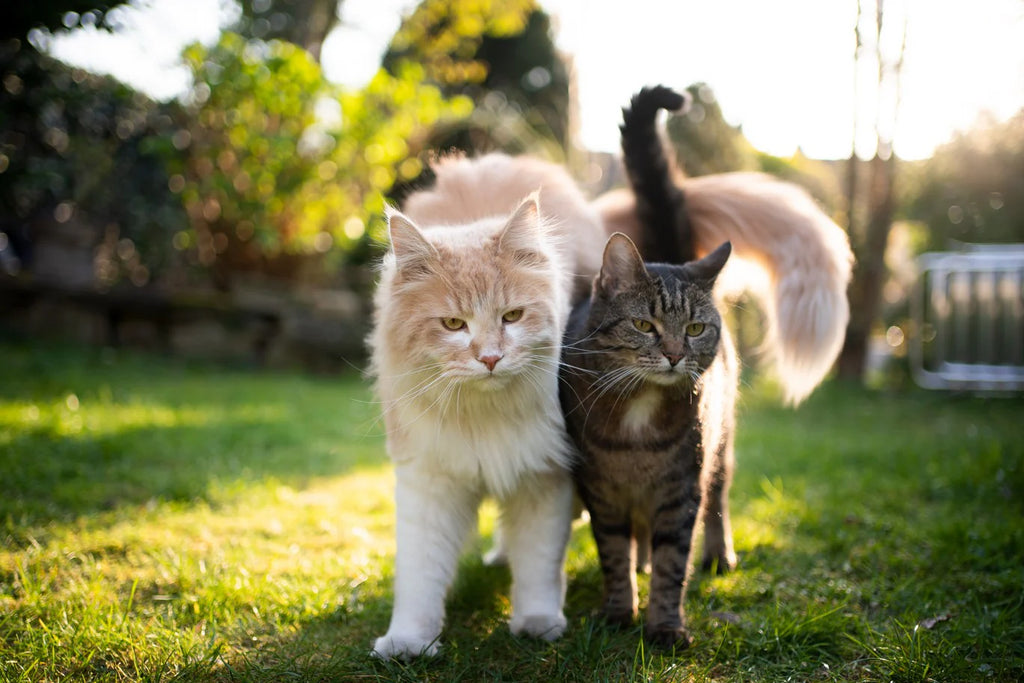Why do cats wag their tail?
If you've ever seen your cat rattle or "wag" their tail, you might be worried or believe that they are having some kind of medical condition. However, that's far from the truth when it comes to cats and wagging their tails. See, cats are fascinating creatures and their behaviors can often leave us puzzled or intrigued.
Unless dogs, tail wagging is generally associated with happiness or excitement, cats on the other hand, use their tails for a variety of emotions. Understanding why they are wagging their tail, and more importantly, in what way, will provide us with deeper insights into their emotional state and help us build a stronger bond.

The Language of the Tail
Our lovely feline friends communicate with us through a combination of vocalization, body languages and other behaviors, with their tail being a crucial part. The tail acts like a barometer for a cat's inner feelings and their intentions. Here are some of the reasons why they may wag their tail.
Emotional Expression
Often your cat might meow at your but most of the time you can understand how they are feeling in the moment by their tails. For happiness or contentment a cat will usually swing their tail gently, this can happen often when they are lying down and are in a relaxed state.
On the other end of the spectrum, when your cat becomes annoyed or irritated the tail will las back and forth. For my cat, Jimmy, it's a sign that he might expose his claws or even go in for a cautious bite. Either way it means to step back or else your cute kitty might turn mean.
Finally, a puffed up tail combined with an arch back shows excitement. This is when your cat's senses are heightened. It also requires a bit of context, since sometimes this also means fear or agitation. This is a cat's attempt to appear larger and more intimidating to a perceived threat.
Communication and Interaction
Cats also use their tails to communicate with other animals and humans. A cat might:
- Greet: A cat holding its tail straight up or with a slight curve at the top is generally expressing a friendly greeting or confidence.
- Show Curiosity: A tail held high but with a question mark shape can indicate curiosity or playful interest.
- Assert Dominance: In interactions with other cats, the position and movement of a tail can play a role in establishing dominance or submission.
3. Hunting and Focus
When a cat is focused on prey or an object of interest, such as a toy, it might wag or twitch the tip of its tail. This subtle movement can be a sign of concentration and the cat's predatory instincts kicking in. It's a prelude to the pounce.
4. Balancing Act
Cats are known for their agility and balance, and the tail plays a crucial role in these abilities. When walking along narrow spaces or making intricate jumps, cats may use their tails for balance. The tail's movements help them maintain stability and correct their orientation mid-air.

Understanding Your Cat
To truly understand why your cat is wagging its tail, it's essential to consider the context and other body language cues. The eyes, ears, fur, and overall body posture, in conjunction with the tail, can provide a more complete picture of your cat's emotional state and intentions.
Cats wag their tails for various reasons, ranging from emotional expression to communication and balance. By paying attention to the nuances of this behavior, cat owners can better understand and respond to their feline companions' needs and moods. Remember, every cat is unique, and learning to read your specific cat's tail language can enhance the bond between you and your pet, making for a more harmonious and understanding relationship.


